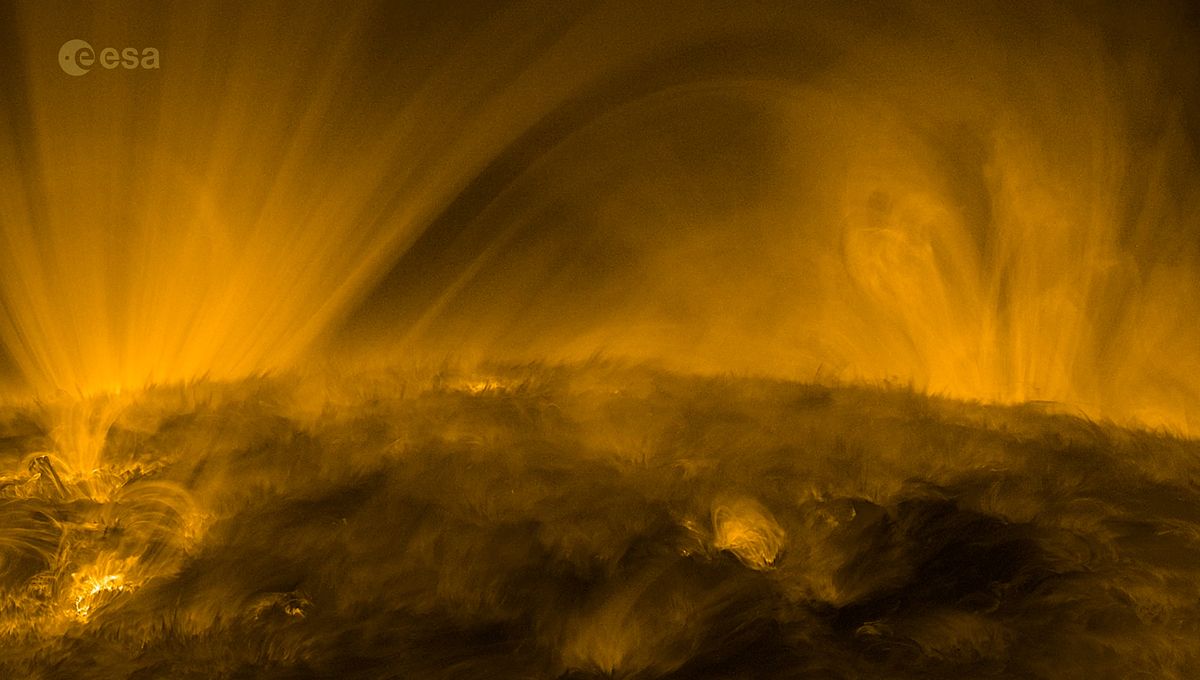
The European Space Agency’s Solar Orbiter has observed the incredible behavior in the Sun’s lower atmosphere like never before. The Sun’s corona is an ever-changing landscape with a range of fascinating features, from “moss” to “rain”. The new footage is providing a front seat to the currently active Sun.
In previous videos of the Sun, we have seen spectacular eruptions release huge quantities of particles out into the Solar System. In September last year, Solar Orbiter spotted a more modest eruption – although it was still taller than our whole planet – as well as coronal moss, coronal rain, and spicules all in amazing detail, which has just been released.
So, what are we looking at in this video?
On the solar horizon we can see spicules, spires of plasma that reach up from the chromosphere into the solar corona above. They extend up to 10,000 kilometers (6,200 miles) into the higher levels of the solar atmosphere. We can also see coronal “moss”, lace-like patterns of plasma found at the base of coronal loops, the arch-like structures seen extending well above the surface of the Sun.
Those loops create another effect: coronal rain. The loops are very bright because they are very hot, around 1 million °C. Some of the plasma cools and, thanks to gravity, comes back down in darker high-density clumps known as “rain”. These clumps are still hot but less scorching at probably less than 10,000 °C (18,000 °F). They are easier to see as they are much darker than the intensely hot coronal loops. This is the Sun in extreme ultraviolet.
Solar Orbiter took the video on September 27, 2023. Just a few days later, on October 7, it was at its closest distance from the Sun: 43 million kilometers (26.7 million miles). That’s less than one-third of the Earth-Sun distance. On the same day the video was taken, NASA’s Parker Solar Probe was just 7.26 million kilometers (4.51 million miles) from the Sun, so the space agencies teamed up. Parker measures the particles and magnetic field in the Sun’s corona and the solar wind, so Solar Orbiter observed the region from where the solar wind came to flow past Parker. Together, the spacecrafts are providing important insights into the Sun and how it works.
Source Link: Solar "Moss" And Coronal "Rain" Captured In Incredible New Close-Up Video Of The Sun